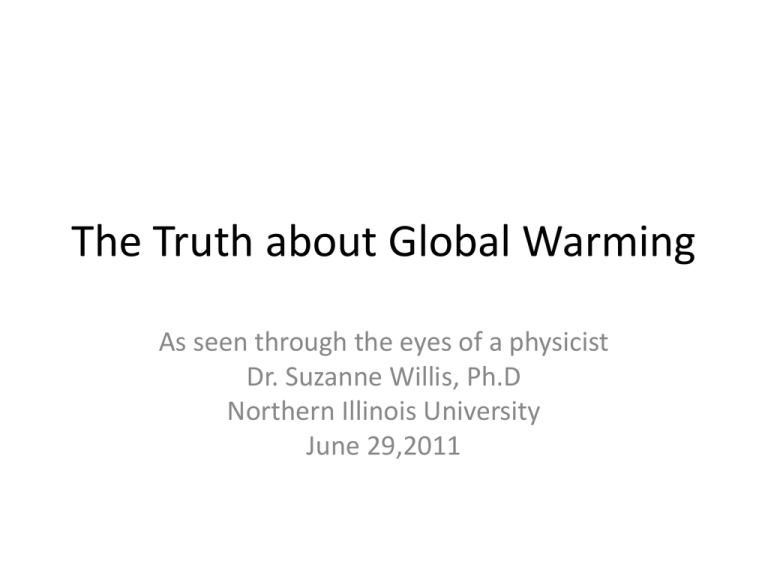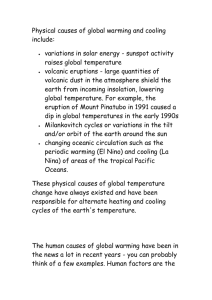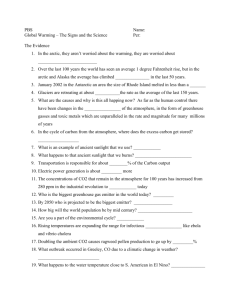The Truth about Global Warming
advertisement

The Truth about Global Warming As seen through the eyes of a physicist Dr. Suzanne Willis, Ph.D Northern Illinois University June 29,2011 Basic physics of warming is well understood The greenhouse effect is (mostly) our friend. Without it the earth would be frozen solid. The temperature of the outer atmosphere is around -19C (-2F); without the greenhouse effect the surface would be the same temperature. It is not; it averages about 14C (57F). The difference comes from greenhouse gases in the atmosphere. Composition of the atmosphere The atmosphere is mostly nitrogen, oxygen, and argon. However, all of these are transparent to infrared radiation and do not contribute to surface warming. Most of the warming comes from carbon dioxide and from water vapor. Due to their molecular structure, these molecules absorb incoming sunlight and reradiate it in all directions, resulting in warming of the earth’s surface. Contributions of water vapor and carbon dioxide The pie charts on the previous slide are for the dry atmosphere. The amount of water vapor in the atmosphere changes daily but is constant averaged over time (it comes from open water sources on the surface), except that the average value rises as the average temperature rises. The amount of carbon dioxide fluctuates seasonally and also over longer periods of time; however in the past century it has been artificially elevated due to burning of fossil fuels. This has resulted in a corresponding increase in temperature. Carbon dioxide in the atmosphere This plot shows CO2 emissions and atmospheric concentrations since 1751. This plot shows detailed measurements of CO2 concentrations in the atmosphere as a monthly total and a moving average. Carbon dioxide in the atmosphere Fossil fuels have been deposited over hundreds of millions of years, and the isotopic composition of the carbon in them is different from carbon that comes from living plants. Isotopic measurements on atmospheric CO2 show that the excess comes from fossil fuels and not from live plants. Much of the CO2 that is emitted goes into the oceans, whose acidity has increased as a result. Evidence for Global Warming and Climate Change Air temperature is increasing over land and sea. Evidence for Global Warming and Climate Change Sea temperature is rising. Evidence for Global Warming and Climate Change Amount of energy stored in the oceans as heat is rising. Evidence for Global Warming and Climate Change Species are migrating towards the poles and towards higher elevations. Ice sheets are melting. Evidence for Global Warming and Climate Change Glaciers are melting. Snow cover is decreasing. Spring is coming earlier. Humidity is increasing. Climate is not weather Single events, no matter how impressive, cannot be used as evidence for or against climate change. It takes the accumulation of many events over many years. Heat is a form of energy; as the average temperature increases we expect to see more extreme weather, consistent with what has been observed. Global warming is not local In order to understand what is happening to the planet as a whole, you need to look at global patterns and events. Effects of rapid increases in atmospheric CO2 • More extreme weather • Tropical diseases and plants moving into previously temperate climes • Rising sea levels • More – see references The rate of change makes it difficult for adaptation, either natural or assisted The most technological societies tend to be the most vulnerable to disruption Fossil fuels are running out At current rates of consumption, assuming the current rate of increase does not change, oil, gas, and coal will all be gone in about 40 years (according to data from GE). Visualization





